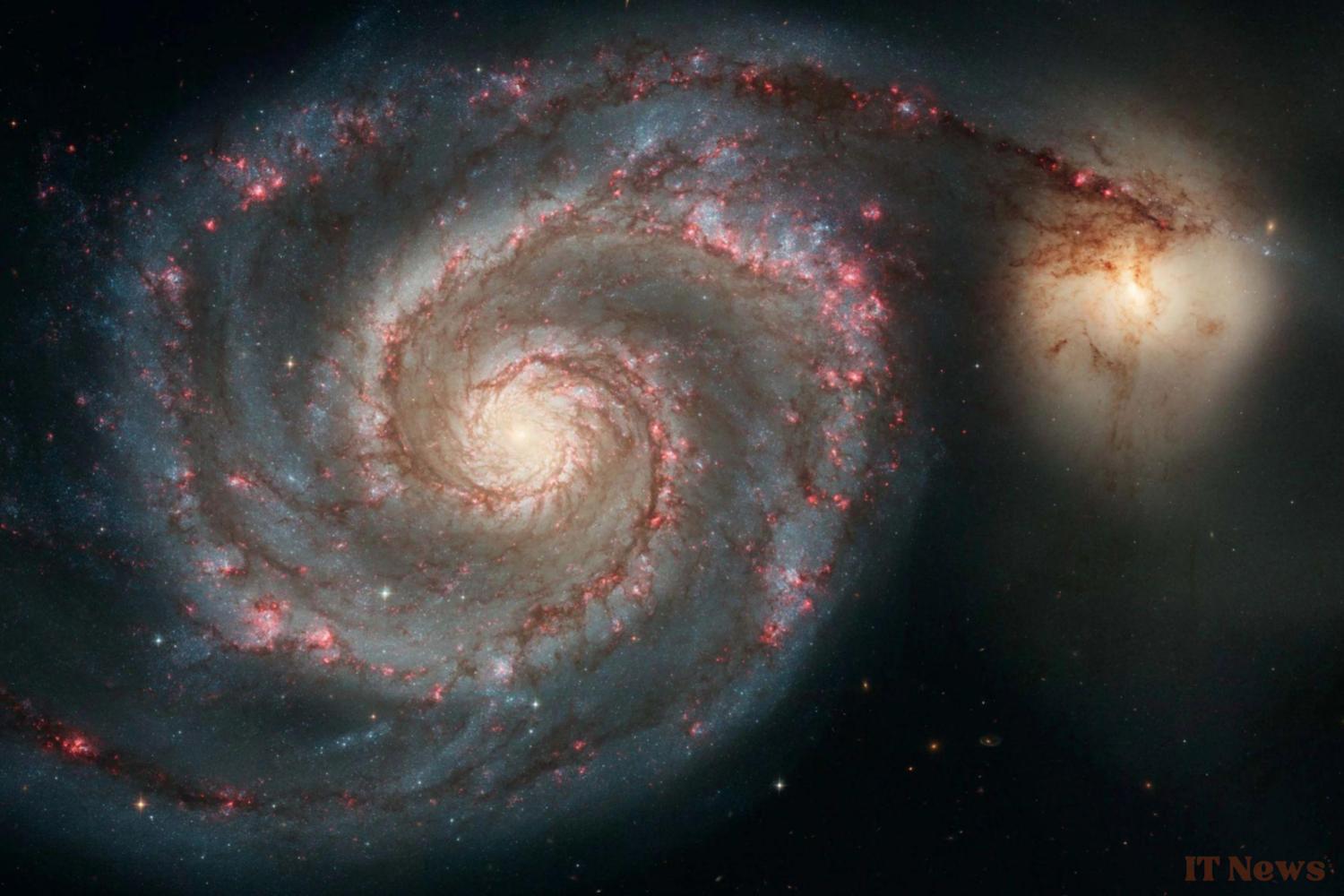The Earth rotates, the Sun rotates, the Milky Way rotates... and so may the entire Universe, according to a study recently published by Hungarian researchers. An interpretation that, if confirmed, could help specialists resolve a major sticking point in modern astrophysics.
It has been known for nearly a century that our universe is expanding over time. Experts have therefore been trying to calculate the speed of this expansion—and this is where the problems begin: it turns out that the different measurement methods cannot agree on this value.
On the one hand, some observations are based on the relative positions of Cepheids, extremely luminous stars that serve as beacons for astronomers to calculate the distance between two regions of the cosmos. By making these kinds of measurements regularly, we can therefore determine the rate of expansion of the universe. Based on the work of the illustrious Edwin Hubble and his colleagues in 1929, modern physicists now believe that our world is expanding at a rate of about 73 kilometers per second per megaparsec — a number known as the the Hubble-Lemaître constant.
Over the decades, astrophysicists have devised alternative methods for calculating this famous constant. ESA's Planck mission, for example, is based on observing the electromagnetic remnants of the Big Bang. Ideally, both approaches should produce the same result… but in practice, this is not the case. The second produces significantly different figures, namely around 67 km/s/mpc. We end up with a major inconsistency called the Hubble Tension. And to date, no one has yet managed to rigorously prove where it comes from.
The JWST and Hubble agree on the expansion of the Universe… but the mystery deepens
What if the Universe were spinning?
The hypotheses broadly fall into two distinct categories. It could simply be a systematic error, either in the measurements or in the methodology itself. A conclusion that isn't particularly spectacular, certainly, but still important, because it would considerably strengthen modern cosmological models.
The other possibility, however, is much more exciting: the Hubble tension could also be due to a previously unidentified physical phenomenon that could redefine everything we know about the history and dynamics of the Universe. And it is precisely in this category that the proposal of the authors of this new study falls.
By exploring different avenues for the origin of the tension, these researchers decided to modify a very important parameter. Instead of working with a relatively homogeneous universe, as the vast majority of current models do, they considered that it was actually rotating on its own axis. And when they applied the methods cited above to measure the expansion rate of this virtual universe, they were astonishingly aware that this modification made it possible to reconcile the two approaches. In other words, they mathematically showed that the Hubble tension could disappear in a rotating universe. "To our surprise, we found that our rotating model resolves the paradox without contradicting current astronomical measurements. Better still, it is compatible with other models that assume rotation," explains István Szapudi, lead author of the study, in a press release. This last point is particularly important. Indeed, this is not the first time that the idea of a rotating universe has reared its ugly head. But hypotheses of this kind tend to be quickly dismissed, for two reasons. First, they often seem incompatible with observations of the cosmic microwave background radiation—an electromagnetic radiation considered a relic of the Big Bang.
Furthermore, they tend to rely on the existence of closed space-time loops (or more rigorously, closed causal curves). A fascinating concept, but one that would shatter many of the foundations of physics as we understand it today, such as the all-important principle of causality.
By showing that the theory of a rotating universe could be compatible with real-world observations, and without forcing us to reconstruct the whole of modern physics, the authors of the study have thus opened up a promising and interesting avenue of research. This idea would raise a host of subsidiary questions, each more fascinating than the last, starting with the origin of the immense force that would be necessary to rotate all existing matter.
A promising avenue that will need to be explored
But as always in science, it would be very indelicate to count the cost before killing the bear. Before going any further, we will have to start by rigorously validating this model, which will be no easy task.
According to the team, the first step will be to create a very large-scale computer simulation of a rotating universe using a supercomputer. This will at least allow us to verify whether this mathematical model, which ultimately remains a simplification, holds up at the most superficial level before diving deeper and deeper into the heart of the problem.
In any case, the verification process promises to be as fascinating as the hypothesis itself, and it will be very interesting to follow the results of this study.
The text of the study is available here.



0 Comments